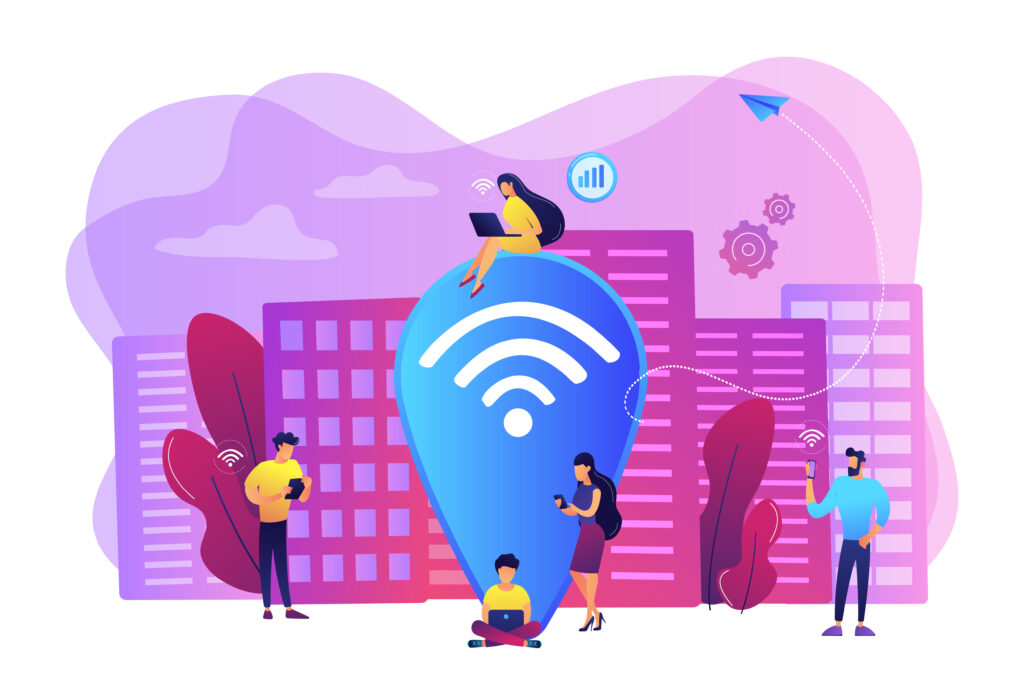Public Wi-Fi has revolutionized the way we stay connected, enabling us to work, socialize, and browse the internet from coffee shops, airports, hotels, and more. However, the convenience of public Wi-Fi comes with a caveat: it’s often a playground for cybercriminals looking to exploit vulnerabilities and steal sensitive information. Safely browsing on public Wi-Fi requires a combination of awareness, preparation, and proactive measures. This article offers valuable insights and actionable tips to help you browse securely on public Wi-Fi networks.

1. Choose Trusted Networks:
Opt for networks provided by reputable establishments or businesses. Avoid connecting to unsecured or ad hoc networks with generic names, as these could be malicious attempts to lure unsuspecting users.
2. Use a Virtual Private Network (VPN):
A VPN encrypts your internet connection, ensuring that your data remains private even when using public Wi-Fi. It routes your traffic through a secure server, making it difficult for cybercriminals to intercept your information.
3. Disable Sharing and Public Access:
Turn off file and printer sharing, as well as public folder sharing, when connected to public Wi-Fi. This prevents unauthorized users from accessing your files and devices.
4. Enable Firewall Protection:
Activate your device’s built-in firewall or install a reliable third-party firewall. Firewalls act as barriers between your device and potential threats, blocking unauthorized incoming and outgoing connections.
5. Use Secure Websites (HTTPS):
Access websites that use HTTPS (Hyper Text Transfer Protocol Secure). These websites encrypt the data exchanged between your browser and the server, enhancing your online security.
6. Enable Two-Factor Authentication (2FA):
Whenever possible, enable 2FA for your accounts. This extra layer of security requires you to provide a second verification method, such as a code sent to your phone, in addition to your password.
7. Disable Auto-Connecting to Wi-Fi:
Turn off the auto-connect feature on your device. This prevents it from automatically connecting to open Wi-Fi networks, reducing the risk of connecting to a malicious network.
8. Avoid Sensitive Transactions:
Refrain from conducting sensitive transactions, such as online shopping or banking, while connected to public Wi-Fi. Wait until you’re on a secure and trusted network.
9. Keep Software Updated:
Regularly update your device’s operating system, web browsers, and security software. These updates often include patches that address vulnerabilities cybercriminals might exploit.
10. Forget the Network After Use:
Once you’re done using a public Wi-Fi network, disconnect and “forget” the network on your device. This prevents your device from automatically reconnecting in the future.
11. Use a Guest Network (If Available):
If a business or establishment offers a guest network, opt for it. Guest networks are usually isolated from the organization’s main network, reducing the risk of potential attacks.
12. Be Wary of Unusual Pop-Ups:
If you encounter unexpected pop-up windows while browsing, do not click on them. They might contain malicious links or downloads designed to compromise your device.
13. Don’t Trust Open Hotspots:
Avoid connecting to public Wi-Fi networks without passwords. These open hotspots are more susceptible to hacking attempts.
14. Monitor Your Device:
Keep an eye on your device for any unusual activities, such as rapid battery drain or sluggish performance, which could indicate a security breach.
15. Log Out After Use:
Always log out of your accounts and close browser windows after finishing your online activities. This reduces the chances of unauthorized access to your accounts.
16. Educate Yourself:
Stay informed about the latest cybersecurity threats and best practices. Being aware of potential risks can help you make informed decisions while browsing on public Wi-Fi.
Conclusion: Surfing Safely in a Digital Sea
Public Wi-Fi networks have become an integral part of our lives, offering convenience and connectivity. However, they also present security risks that demand cautious browsing habits. By following these tips and maintaining a vigilant approach, you can minimize the chances of falling victim to cyber threats while enjoying the benefits of public Wi-Fi. Remember, a combination of awareness, preparation, and responsible online behavior is the key to browsing safely in the vast digital landscape.